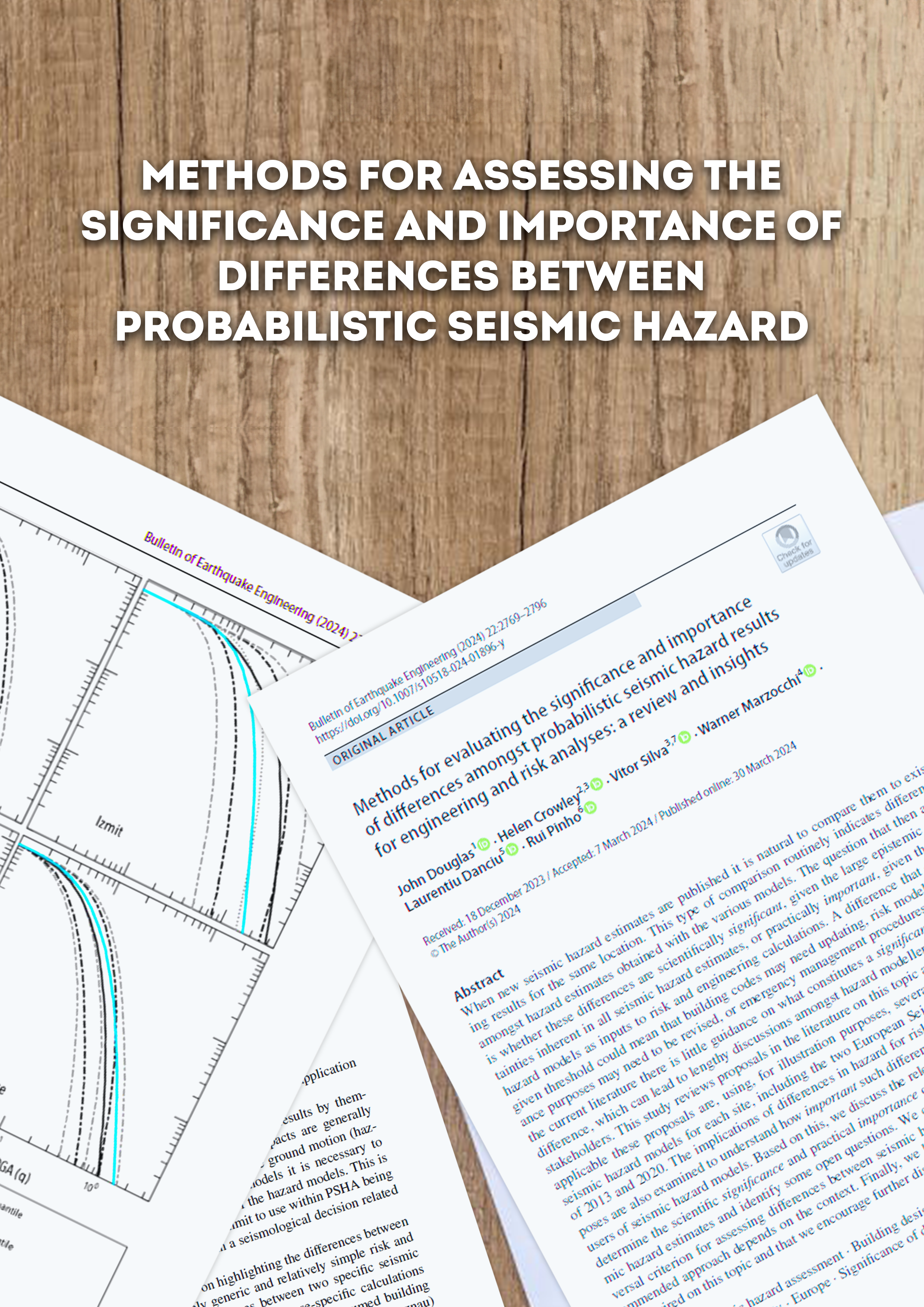top of page
Methods for assessing the significance and importance of differences between probabilistic seismic hazard
2024
|
Peer-reviewed
When new seismic hazard estimates are published it is natural to compare them to existing results for the same location. This type of comparison routinely indicates differences amongst hazard estimates obtained with the various models. The question that then arises is whether these differences are scientifically significant, given the large epistemic uncertainties inherent in all seismic hazard estimates, or practically important, given the use of hazard models as inputs to risk and engineering calculations. A difference that exceeds a given threshold could mean that building codes may need updating, risk models for insurance purposes may need to be revised, or emergency management procedures revisited. In the current literature there is little guidance on what constitutes a significant or important difference, which can lead to lengthy discussions amongst hazard modellers, end users and stakeholders. This study reviews proposals in the literature on this topic and examines how applicable these proposals are, using, for illustration purposes, several sites and various seismic hazard models for each site, including the two European Seismic Hazard Models of 2013 and 2020. The implications of differences in hazard for risk and engineering purposes are also examined to understand how important such differences are for potential end users of seismic hazard models. Based on this, we discuss the relevance of such methods to determine the scientific significance and practical importance of differences between seismic hazard estimates and identify some open questions. We conclude that there is no universal criterion for assessing differences between seismic hazard results and that the recommended approach depends on the context. Finally, we highlight where additional work is required on this topic and that we encourage further discussion of this topic.
bottom of page








